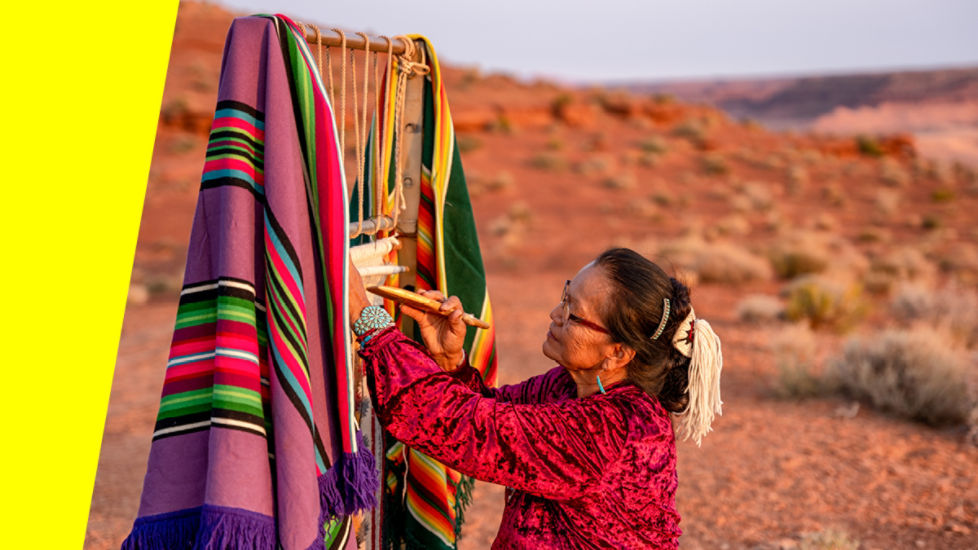“Leadership took on this really broad angle,” says Shirley Chowdhary, Reconciliation and change advocate. “All of a sudden, you had to measure productivity and measure commitment in a way that you hadn't had to before because you didn't get to interact daily with your whole workforce, and you didn’t sit next to them. You had to think about the mental health of your workforce. The really good leaders have always done that, but all of a sudden everybody had to consider that.”
Chowdhary told a recent CommBank Women in Focus event that this new, broader view of leadership is a huge opportunity to lead differently into the next decade. The shift towards a more flexible and inclusive workforce was already underway but the pandemic accelerated the change. The challenge for leaders now is to “create a workplace where everybody can bring their authentic selves to work every day; a place where we can all belong”.
What does diversity truly look like?
Diversity and inclusion have been written into business strategies and discussed at board meetings for several years but Chowdhary fears that for some, they have become tick-the-box exercises.
“It's not just about people who look different around your board table. It's about people who think differently. It's neurodiversity. It's people who live in different communities, people who have different lived experience, people who come from different socio-economic backgrounds. That’s what diversity is.”
To build a genuinely inclusive team, Chowdhary urges organisations to identify, assess, and break down structural and unconscious biases.
“It’s about looking at ways you might be shutting people out,” she says. For instance, consider the location and timing of recruitment drives for graduates and young people, or required working hours and leave entitlements – do they unintentionally exclude a portion of the population?
Chowdhary shared a personal anecdote: she once accepted a position as a ‘diverse voice’ on an executive committee but soon realised she was there to ‘tick a box’ rather than because her voice was valued.
“They didn't want me to have a voice. And that is so soul destroying, when you are in a company and you realise that you don't have a voice,” she says.
“What message does it send to your Indigenous employees when you only bring out the RAP (Reconciliation Action Plan) twice a year during NAIDOC Week or Reconciliation Week? What happens when a company is really great at celebrating International Women’s Day, but they don’t have policies in place that actually support their female workforce?
“This runs counter to creating a workforce where we (individuals) feel like we belong. All of us just want to be able to take our authentic selves into the workplace. How exhausting is it to be one person at work and another at home?”
She also encourages acknowledging the cultural diversity of your workforce by providing leave for Ramadan for Muslim employees or offering sorry business leave for Indigenous employees, just as CommBank has done in its Group Diversity and Inclusion Policy. Similarly, businesses need to extend parental leave to surrogacy, still birth and adoption. She also had a strong message to new fathers: “Until men take parental leave in the same way that women take it, and until men job share and do flexible working, the stigma of those things remains with women.”
Implementing diversity beyond your workforce
Chowdhary challenges organisations to embed diversity beyond their workforce. “Diversity is an opportunity for you to look at your product … at the widget you're producing, that you're selling, to look at the supply chains and how you market, to look at who you sell to, look at who your target audience is, and to think in a really deep way about how your organisation can reflect its entire audience.”
She says research continues to show that companies that have innovative leave entitlements or are flexible around a five-day work week and hybrid working, are rewarded with increased productivity and employee loyalty.
As such, she questions why the belief persists that office presence is necessary to create a feeling of ‘we’re all in this together’.
“What if we actually forgot that we used to work in the office, and we try and create new ways to create that sense of connection?
“But it requires us to look hard at how we work, where we work, who we work with, and the message we send to people in our workplaces. It’s incumbent on all of us to look for leadership in all its guises … you have to lead the way.”
Our diversity expert
Shirley Chowdhary is an advocate for Reconciliation and the strength that Australians can draw from Indigenous Australia and its heritage and culture, the oldest living culture in the world. She believes in the power of diversity and inclusion and is an advocate for increasing diversity among corporate and not-for-profit boards, and senior management.
Shirley has a diverse set of credential spanning law, financial service, investment management, the NFP sector and journalism. She has practiced law in Australia and the US and has worked across Asia and Australia in the corporate and for-purpose sectors. Shirley was the inaugural CEO of the GO Foundation, an indigenous NFP providing education pathways and support to indigenous students across Australia. She is non-executive director of Australian Associated Press (and Chair of the Risk, Audit and Finance Committee) and the Royal Australian Institute of Architects, and Chair of the Advisory Board of Octadoc, a med-tech start-up and Mentor Walks. Shirley was also one of the 2019 AFR 100 Women of Influence.




